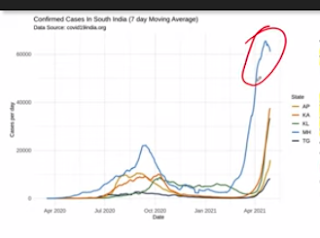Experts are saying that a new Andhra Pradesh variant of the SARS-COV-2 virus is at least 15 times more virulent than the earlier ones.
May be even stronger than the Indian variants of B.1.617 and B.1.618.
Speculation is still on regarding whether it is a new strain or the old N440K.
The N440K variant was first discovered by Centre for Cellular and Molecular Biology (CCMB).However, data is still insufficient to confirm anythin.
The impact of AP Strain
Authorities say that the variant at present which is in circulation in Visakhapatnam is different from what we have seen during the first wave last year. Samples have been sent to CCMB for analysis, in order to find out which strain is in circulation right now.It has been observed that the new variant has shorter incubation period and the progress of the disease is much rapid.
In the earlier cases, a patient infected with the virus would take at least a week to reach the hypoxia or dyspnea stage. But in the present context, patients are reaching the serious condition stage within three or four days. Authorities say, that is why there is heavy pressure on beds with oxygen or ICU beds.
Unlike during the first wave, a shorter exposure is enough to acquire the virus. This enables an infected person to infect four to five persons, within a shorter contact span. It is also observed that cytokine storm is occurring faster and some patients are not responding to treatment.This makes the variant highly unpredictable.
B.1.617 (blue) and B.1.1.7 (green) lineages seem to be edging out every other lineages which were prevalent
in India.
In Maharashtra, the increase in B.1.617 is seen in February rather than March 2021. Here again, we observe a reduction in proportion of lineages with N440K.
This coincides well with the second waves seen in the respective states.In Maharashtra, the second wave started
almost a month and half earlier compared to the 4 southern states, along with the explosion of B.1.617 at the expense of lineages with the mutation N440K.






Comments